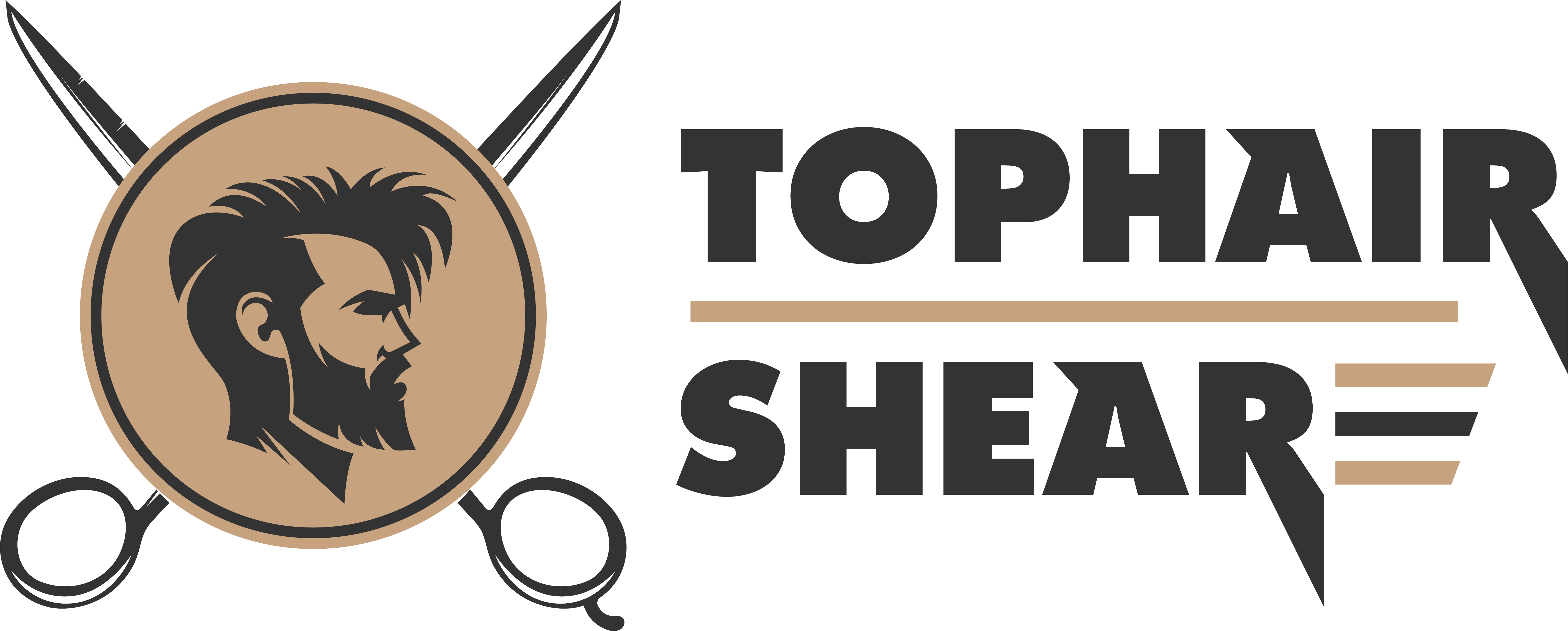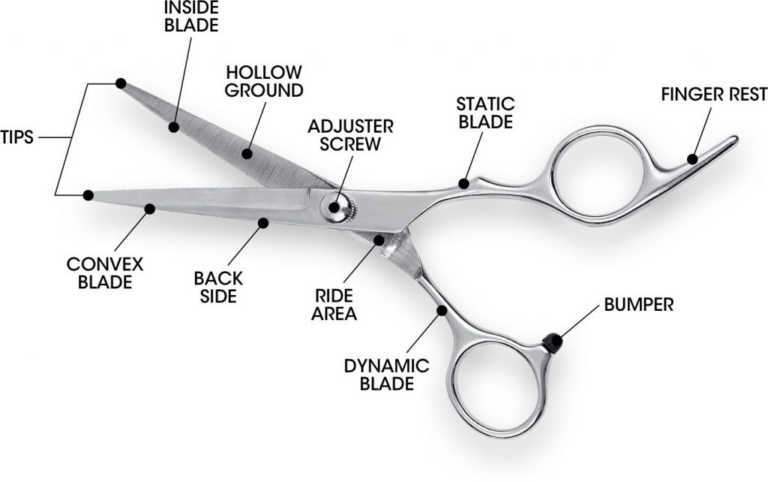What are the different shears parts – what you need to know
The key components of scissors
Precision is essential in hairstyle. Understanding the fundamental pieces of shears and how they contribute to correct and successful cutting is vital whether you are a professional stylist or someone who loves experimenting with their hair. These tools may look basic at first glance but are more complex than you realize. Each component is critical to achieving the intended effects. Learning about these crucial shears parts may improve understanding of scissors and their inner workings, from the handles to the blades.
Blades Unveiling the Distinctive Styles for Cutting Shears
Blades are essential in cutting shears; understanding the various kinds may significantly influence your cutting method. German shears are distinguished by their beveled blades, which give strength and longevity. Bevelled blades’ straight cutting edge suits them for various cutting jobs. On the other hand, Japanese shears frequently have convex blades, which have a gentle curvature and provide smoother, more precise cutting. The convex shape lets the blades slide smoothly through the hair, giving in cleaner and sharper cuts. Choosing the right blade style for your unique needs and preferences will improve your cutting abilities and provide outstanding results.
In addition to blade style, the type of blades utilized for various cutting procedures must be considered. Smooth edges are typical in cutting shears, allowing for a clean and straight-cutting motion. On the other hand, texturizing shears are curved blades perfect for adding texture and eliminating bulk from the hair. The number of teeth on the edges may be adjusted, giving you a variety of possibilities for obtaining the appropriate texturized effects. Understanding the purpose and features of various blade designs and kinds enables you to choose the best equipment for improving your cutting abilities and bringing your hairstyling dreams to reality.
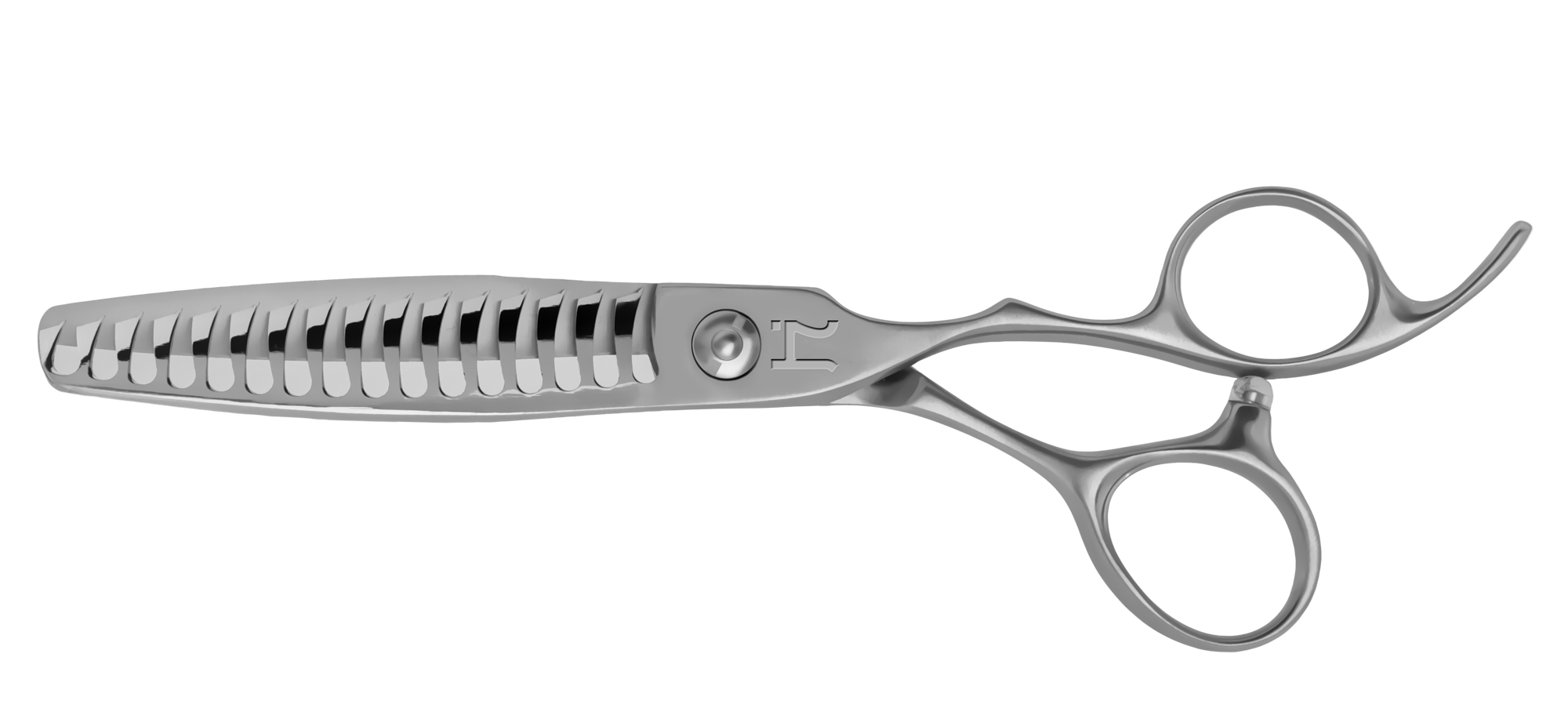
Point or shear tip
The point or tip of scissors is where the blades meet when the finger rings are closed. For methods like point-cutting, which provide texture, this area is essential. Scissors might look simple, but they should be handled carefully. Safety must always come first to prevent unintentional injury using scissors with sharp points. Precautions include maintaining a tight hold and avoiding touching the tip is essential. Knowing the significance of shears parts may improve your cutting abilities while guaranteeing a secure hairstyling experience.
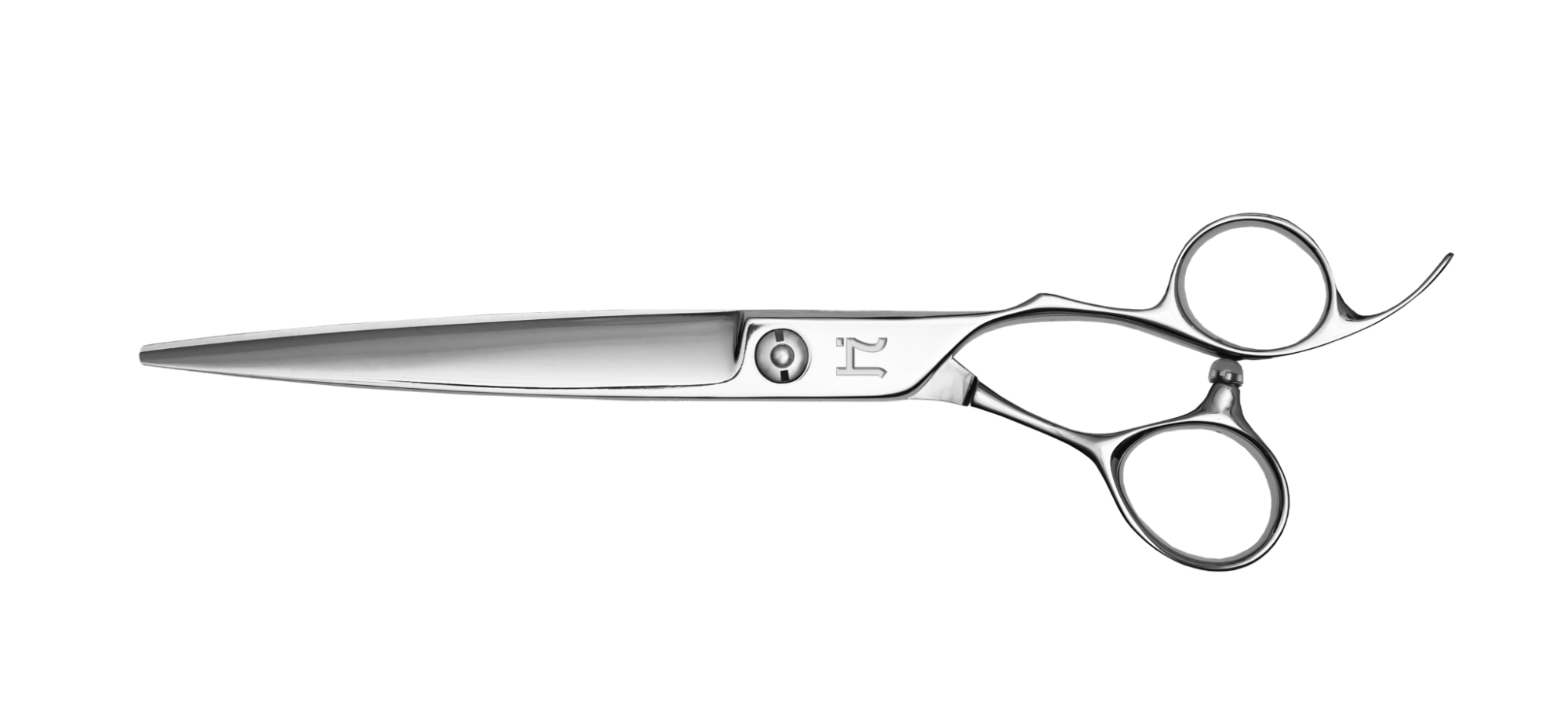
Finger Rings
Finger rings may seem small, but they play a significant role in scissors. They are present in all types of shears and have a crucial job: providing a comfortable grip. With two rings, one for the index or middle finger and another for the thumb, they determine the type of handle. Understanding finger rings helps hair stylists choose the right scissors for better control and improved cutting techniques.
Insert Rings
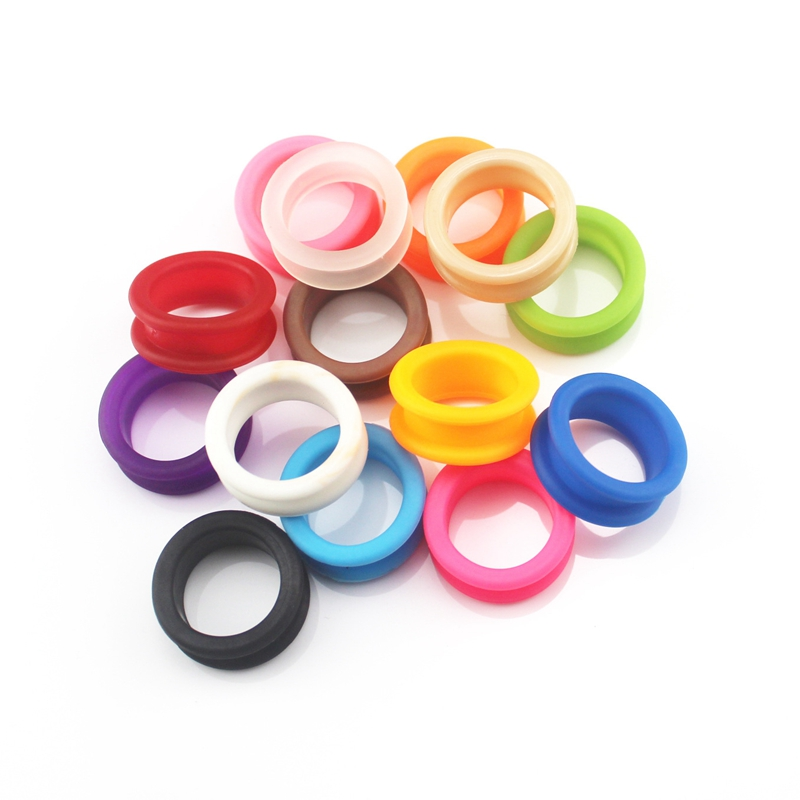 Insert rings offer a simple solution for customizing the fit of shears. Perfect for those with smaller or larger hands, these handy accessories can be placed inside the finger rings to enhance comfort and grip. Using insert rings allows hairstylists to enjoy a personalized fit, reducing strain and improving cutting control. Elevate your cutting experience with the added convenience of insert rings.
Insert rings offer a simple solution for customizing the fit of shears. Perfect for those with smaller or larger hands, these handy accessories can be placed inside the finger rings to enhance comfort and grip. Using insert rings allows hairstylists to enjoy a personalized fit, reducing strain and improving cutting control. Elevate your cutting experience with the added convenience of insert rings.
Stopper
Stoppers are essential shear parts that keep the finger rings from hitting each other while cutting. Made of rubber or plastic, they help achieve smoother movement and prevent early damage. Trusted brands like Scissor Tech, Jaguar Scissors, and Hattori Hanzo always include stoppers in their high-quality shears. Keep your shears in top shape by using stoppers to protect them.
Inner Blade: Unlocking Precision with Sharp Inner Blades
Sharp inner blades are essential for achieving accurate haircuts. Dull blades can lead to cutting errors, so it is necessary to maintain their sharpness. You can use a guide to sharpen scissors at home and keep them in optimal condition for the desired haircut.
The Adjustment Screw: Keeping Shear Blades Together
The adjustment screw is an essential shears part that holds the two blades together. It is inserted into a hole in the middle section of the blades, securing them in place. There are two different kinds of screws: adjustable and non-adjustable.
The tension between the blades may be altered to suit particular requirements thanks to an adjustable screw. Because of its adaptability, hair stylists may adjust the tightness to suit various cutting needs. On the other hand, the edges of the blades are connected by a non-adjustable screw, which offers an effective connection without the ability to modify the tension.
Hairstylists may retain control and provide the ideal cutting results by knowing the adjustment screw’s function. Whether adjustable or not, this minor element is crucial to the continued efficiency of shears.
Finger Rest for Enhanced Stability, Control and Comfort
The finger rest is a metal support designed to give fingertips a dependable and stable hold during haircuts. Because it is frequently removable, stylists can utilize it however they see fit. While cutting hair, the finger rest is quite helpful in increasing control and comfort. Hairstylists may improve their stability and have a more comfortable cutting experience using finger rest.
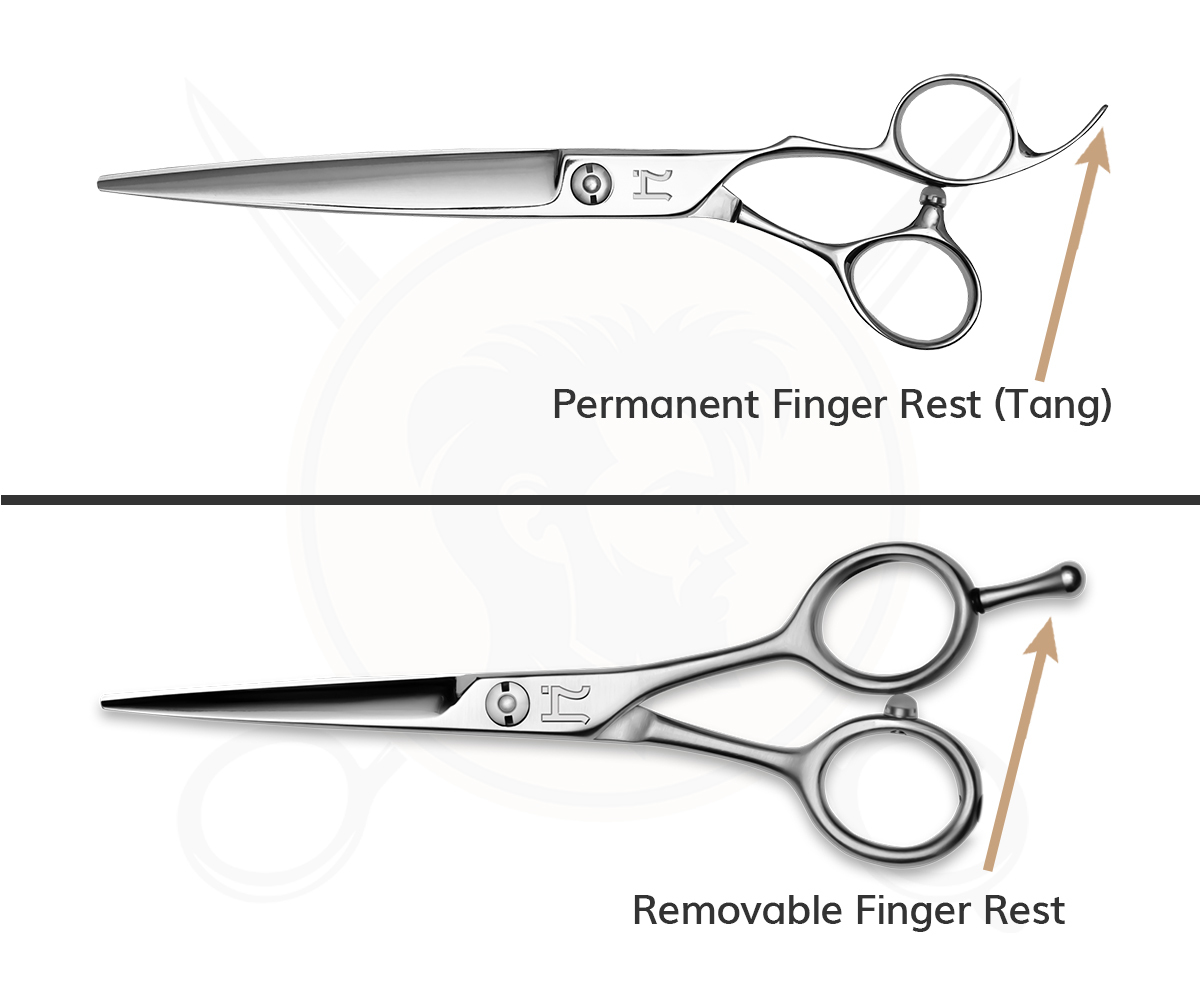
Related: How To Get Rid Of Rust On Scissors – Simple Guide
Understanding the Different Edges of Shears
There are three different types of shear edges:
- Serrated Edge: This edge is best for beginners when cutting dry hair. It offers improved control and reduces the possibility of slippage during cutting.
- Straight Edge: Slicing and point-cutting techniques work best with a straight edge. It enables hair stylists to make accurate, tidy cuts.
- Convex edge: Shears with a convex edge are frequently preferred by barbers in the industry. These edges are preferred because they provide a smooth cutting experience and seamless results.
Hairstylists may pick the best shears for their cutting techniques and produce the desired results by learning the properties of these various edges.
